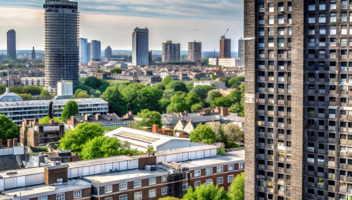In November, I set out the key provisions of the Housing (Cladding Remediation) (Scotland) Bill (“Cladding Bill”) .
Because this Cladding Bill is being expedited, there will not be the full standard public consultation. However, there has been a short public consultation which closed on Friday 8 December 2023. The Scottish Parliament’s Local Government, Housing and Planning Committee, which is leading scrutiny of the plans, had been encouraging the public to respond to the consultation.
It is not clear when feedback from the consultation will be published and when the Cladding Bill will become law.
As I set out previously, the Cladding Bill provides very high-level powers with the detail being set out in regulations, which means that there are currently more questions than answers.
How are non-developer works addressed?
The benchmark for the Single Building Assessment (SBA) still needs to be finalised. This is the lynchpin to the whole system and, without it, it is very difficult for developers to have full visibility of their financial exposure or the process. There is also no visibility on what happens if the SBA identifies developer and non-developer works. Where developers are being asked to undertake SBAs on buildings constructed in 1992, it is likely that there will be wear and tear as well as maintenance issues. These items would not fall to the developer to remediate but the works may need to be done to allow the building to be added to the Cladding Assurance Register. There is no detail on how this would work in practice.
What will remediation works entail?
The Cladding Bill states that remedial work will be identified in an SBA which is needed to “eliminate or mitigate risks to human life that are (directly or indirectly) created or exacerbated by the building’s external wall cladding system.” This definition is very widely drafted and there will need to be technical input to ascertain the extent of works which will fall within this definition.
Responsible Developers Scheme (RDS)
Again, the detail will be contained in regulations. However, there are a number of points which could cause concern:
1. Connection to a building
The Cladding Bill states that the regulations will set out eligibility for the RDS and that will depend on a person being (a) a developer; and (b) having a connection to a building of a kind described by the regulations that has problematic cladding.
The concern arises in respect of the reference to “connection”. The Cladding Bill goes on to state that it is for the regulations to describe the kind of connection to a building that a developer must have and that they may provide for to be eligible for membership.
Under the Building Safety Act 2022, the UK government introduced Remediation Contribution Orders and Building Liability Orders. In short, a specified person such as a freeholder or leaseholder could seek to obtain an order against the original developer or a person associated with the developer. In essence, the effect of this was to pierce the corporate veil and look at a developer’s corporate structure and potentially seek to recover monies from parent or sister companies. This was introduced because the government wanted to address situations where buildings were constructed by special purpose vehicles and JVs which had either been wound up or didn’t have any assets.
The reference to “connection” under the Cladding Bill suggests that the Scottish Government is considering a similar approach. However, without seeing the regulations, it is difficult to know what the scope of the connection between body corporates could be.
2. What buildings fall within scope
The Cladding Bill currently refers to buildings which are 11m or above and contain at least one flat. In England, the building is required to contain two flats.
The focus of all the discussions has been on buildings over 11m. However, the Cladding Bill allows for the Scottish Government to change the types of building in relation to which an SBA may be carried out. this means that the Scottish Government could decide to lower the height and bring more buildings within scope.
It is not clear why the Scottish Government wants to have this power but it does mean that the goalposts could be moved at a later date when developers have potentially remediated all of their buildings over 11m.
Conclusion
Without the draft regulations, it is very difficult to understand how many of these processes will work in practice and whether it will ultimately assist in resolving historic cladding issues. In order to make progress with the cladding remediation programme, there requires to be greater visibility on how this will all work in practice.
Related News, Insights & Events

Courts provide guidance on “reasonability” in compensation on termination recovery
A new decision from the Privy Council has provided some guidance on the limits of provisions around the recovery of supply chain costs upon termination for convenience or employer default.

Knowing where you stand is key for agricultural businesses navigating IHT changes
The inheritance tax (IHT) changes scheduled to be introduced in April 2026 are far reaching and of concern to all business owners, but none more so than those in the agricultural industry.

UK government’s response to Grenfell inquiry phase 2 – 10 takeaways
On 26 February 2025, the UK Government published its much anticipated 80-page response to the Phase 2 Report of the Grenfell Tower Inquiry, published in September 2024.





